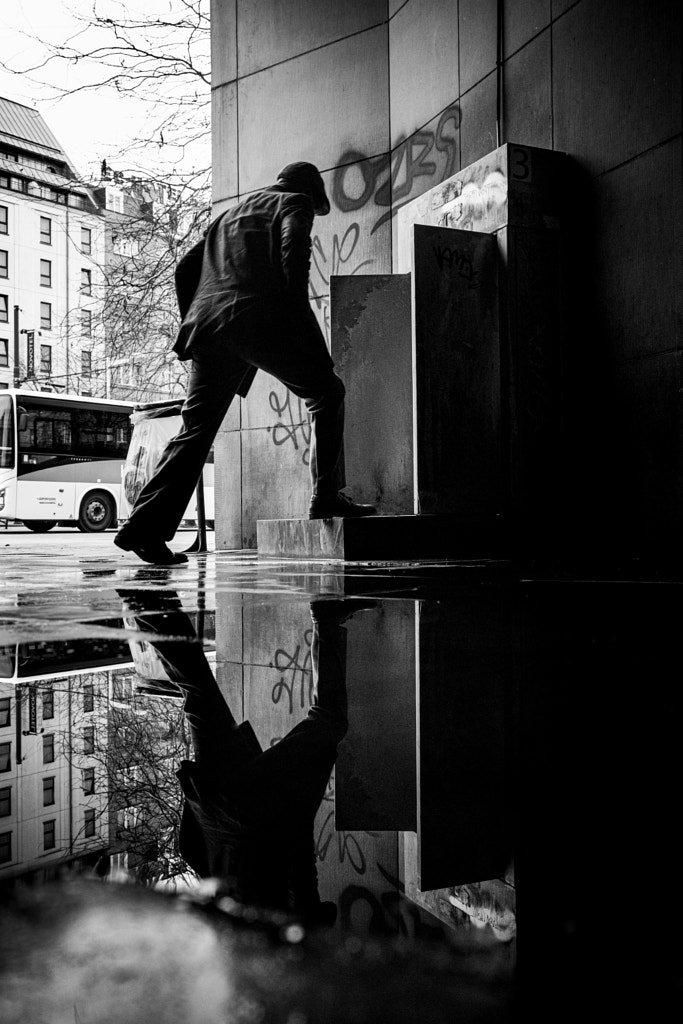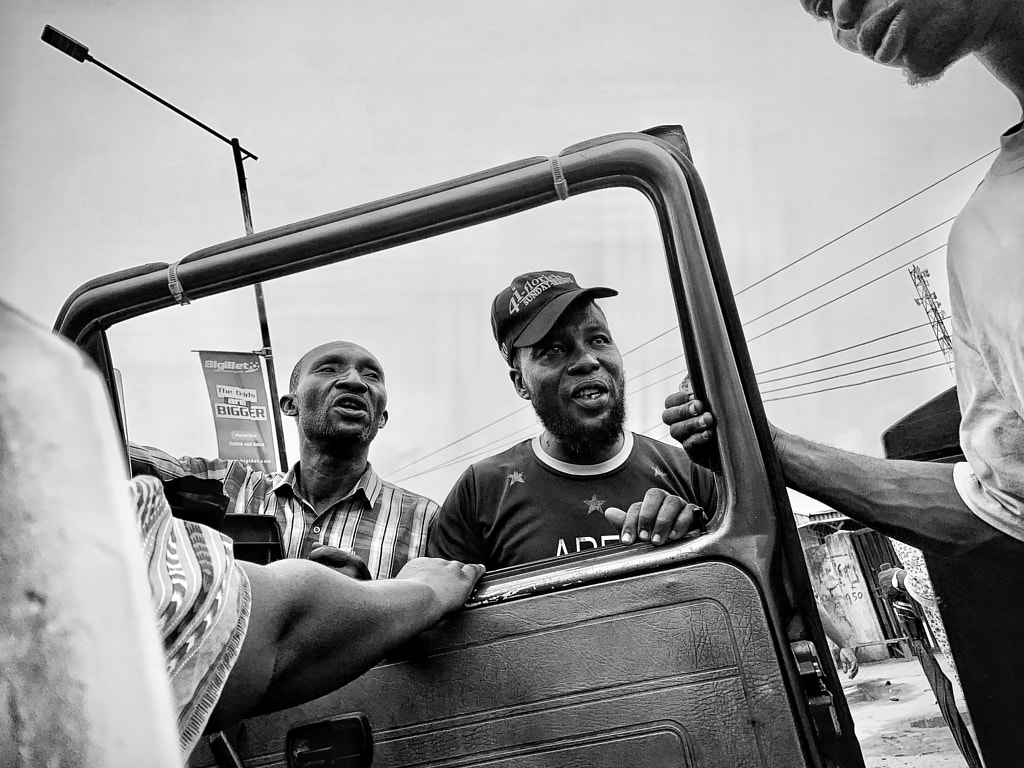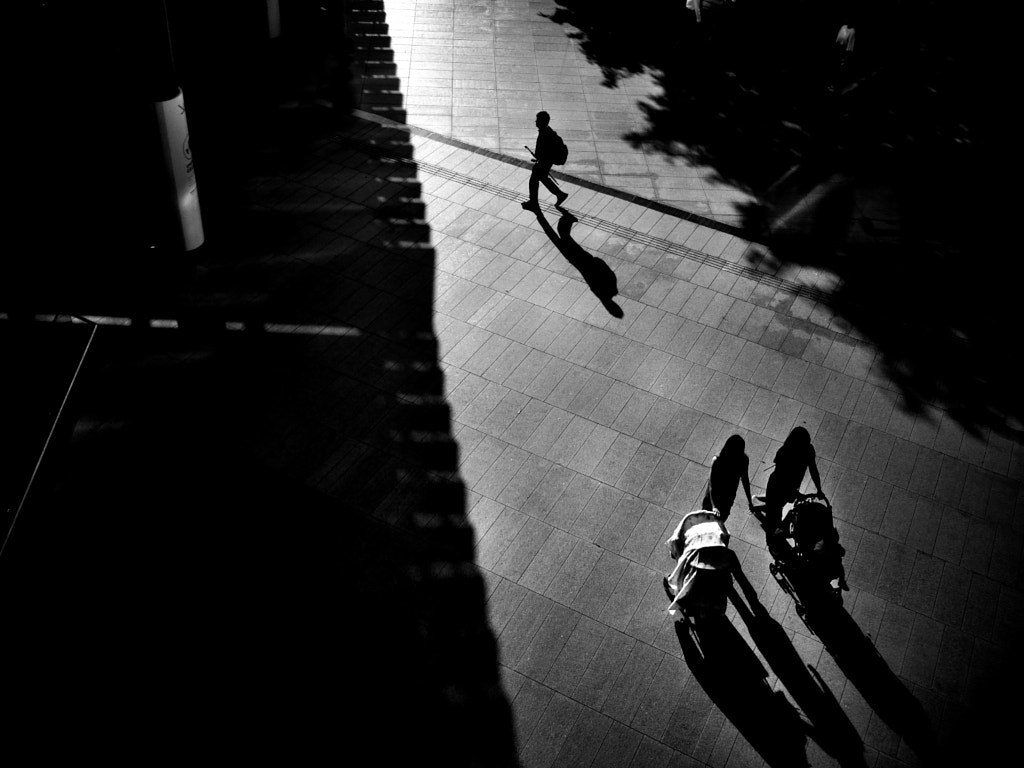Black and white street photography has a long history, dating back to the 1930s, when Henri Cartier-Bresson roamed the hidden corners of Paris and Walker Evans and Helen Levitt rode the New York City subway.
In the following decades, even as color photography began to dominate—first in advertising, then in fine art—pioneering street photographers continued to shoot in black and white for its timeless quality and effortless simplicity. Nearly a century later, many still do. In the last five years, Lomography, CatLABS, Fujifilm, and Kosmo Foto all announced new (or revived) black and white films.
Without the distraction of color, a moment can be distilled to its essence or core. Whether you’re just starting out with street photography or considering a fresh approach, working in monochrome can teach you to see your surroundings in a new way.
Save in RAW format
This one‘s for digital photographers: shooting in RAW format will give you the freedom and flexibility to edit/finesse your shadows and highlights when you convert to black and white in post-production.
If you use an electronic viewfinder (mirrorless cameras have these), you can set it to show black-and-white preview images as you’re shooting—but you can still save the RAW color files for later. This approach can be helpful when training yourself to “see” in black and white.
Seek moments of contrast
When you remove color, your work becomes all about light, so look for scenes with plenty of contrast between light and dark (and with gray tones in between). While most photographers avoid the hard sunlight of midday, these conditions can be an asset for artists shooting in black and white. In Japan, Y Uzen used shadows to creative effect when photographing a cat around noon.
Try visiting a location during different hours to see how the light—and subsequently, the contrast–changes throughout the day. At the golden hour, the shadows will get softer but also longer. At nighttime, streetlights and illuminated storefronts can create a pool of light, while allowing the rest of the frame to fall into darkness.
Experiment with reflections
To add interest to a photograph without color, consider using reflections in your surroundings. This photograph by Benny van den Bulke feels like a modern twist on Henri Cartier-Bresson’s iconic Behind the Gare Saint-Lazare; instead of jumping over a puddle, however, the subject in this picture steps over a toilet leak.
You can also use windows to create double-exposure-like layers within a single frame, à la Vivian Maier, who often photographed her own reflection. While on a boat, for example, the Istanbul-based photographer Emir Bozkurt used reflections to capture the interior and exterior scene at the same time.
Geoffrey Black, on the other hand, used the reflection from a shiny car to incorporate the lines and patterns of a nearby building. In doing so, he created balance and repetition between the foreground and background.
Embrace textures
Without color, texture—along with light—takes on a new layer of significance. Keep an eye out for environments with interesting details. In this photograph by John Harper, the texture of the ground helps capture a sense of place in the cobbled streets of Bath in the UK.
Consider your composition
When you remove color, the composition of your frame itself arguably becomes even more important, so keep the “rules” in the back of your mind. In the photograph above, made in the NYC subway, Aaron Sheldon incorporates two techniques: first, the main subject, the woman, is contained within a “frame within a frame” formed by the parting doors. Her eyeline also falls directly along one of the “golden ratio” lines, creating a sense of harmony and balance.
Meanwhile, in Nigeria, Koyejo Ogunmuyiwa uses the frame formed by the bus windows and the leading lines created by people’s arms to guide our eyes to the main subjects in the portrait above.
Play with silhouettes
Bold silhouettes take the idea of contrast to another level, so consider shooting a dark subject against a bright background. This technique can be particularly effective for minimalist street photographs, where lines and graphic elements take center stage, as in this photograph from an airport by Nina Papiorek.
Use blur to your advantage
Black and white street photography has a gritty, “imperfect” quality, so don’t be afraid to lean into that by incorporating motion blur, as Henri Cartier-Bresson sometimes did while photographing figures in motion, such as bicyclists. Decades later, Aaron Sheldon slowed his shutter speed to 1/49th of a second to capture the motion of this commuter on a train platform.
Change your vantage point
To create interest in a black-and-white photograph, look for higher ground, and capture the street from an unusual perspective. It can be a bridge, stairs, or anything else you can find. Meiu Kai used this technique to capture the full effect of the late afternoon shadows when photographing pedestrians from a high-angle view.
Be patient
In street photography, patience is everything. It often boils down to finding the right location and waiting for the right subject to enter your frame, so do some scouting around your city. The ideal spot won’t have too many distractions, but it’ll have enough activity to increase your chances of spotting that perfect subject. Pascal Müller stopped in this spot after noticing the lovely contrast created by the diagonal shadows; he waited until these businessmen came into the frame before pressing the shutter.
Finesse in post-production
While most of the work is done in-camera, a few thoughtful edits can elevate an already-great photo. Introduce a touch of contrast using the curves tool, or consider guiding the eye throughout an image by making certain areas darker (“burning”) or lighter (“dodging”). Keep an eye on your histogram as you edit to ensure you’re not going too far and losing too many details.
Try film
We started this article with a tip for digital photographers, but black and white and film photography go hand-in-hand. Especially right now, as we’re experiencing a color film shortage, black and white emulsions can be a wonderful way to get started in film photography.
Plus, you can develop your black-and-white film rolls at home, saving money on processing and learning something new in the process. Using a variety of formats and styles—film and digital, black and white and color—will help you to expand your horizons and find an approach that works best for your vision.
Not on 500px yet? Sign up here to explore more impactful photography.
The post 11 tips for better black and white street photography appeared first on 500px.












